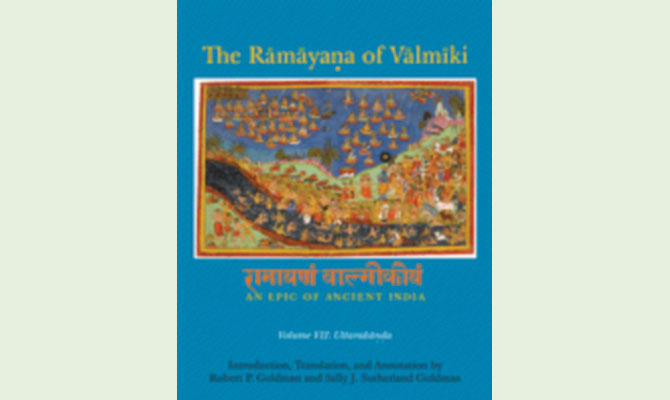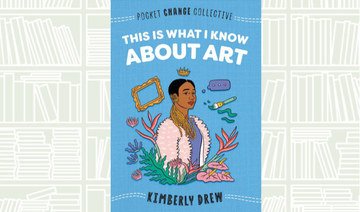The seventh and final book of the monumental Rāmāyaa of Vālmīki, the Uttarakāa, brings the epic saga to a close with an account of the dramatic events of King Rāma’s millennia-long reign.
It opens with a colorful history of the demonic race of the rākasas and the violent career of Rāma’s villainous foe Rāvaa, and later recounts Rāma’s grateful discharge of his allies in the great war at Lankā as well as his romantic reunion with his wife Sītā.
But dark clouds gather as Rāma, confronted by scandal over Sītā’s time in captivity under the lustful Rāvaa, makes the agonizing decision to banish his beloved wife, now pregnant. As Rāma continues as king, marvelous tales and events unfurl, illustrating the benefits of righteous rule and the perils that await monarchs who fail to address the needs of their subjects.
The Uttarakāa has long served as a point of social and religious controversy largely for its accounts of the banishment of Sītā, as well as of Rāma’s killing of a low-caste ascetic. The translators’ introduction provides a full discussion of these issues and the complex reception history of the Uttarakāa. This translation of the critical edition also includes exhaustive notes and a comprehensive bibliography.
Robert P. Goldman is the William and Catherine Magistretti Distinguished Professor of Sanskrit and Indian studies at the University of California, Berkeley, and general editor of the Rāmāyaa Translation Project. Sally J. Sutherland Goldman is senior lecturer in Sanskrit at the University of California, Berkeley, and associate editor of the Rāmāyaa Translation Project.
- Robert P. Goldman & Sally J. Sutherland Goldman
What We Are Reading Today: The Rāmāyaa of Vālmīki: An Epic of Ancient India
What We Are Reading Today: The Rāmāyaa of Vālmīki: An Epic of Ancient India

What We Are Reading Today: ‘The Evolution of Power’ by Geerat Vermeij

Power has many dimensions, from individual attributes such as strength and speed to the collective advantages of groups.
“The Evolution of Power” takes readers on a breathtaking journey across history and the natural world, revealing how the concept of power unifies a vast range of phenomena in the evolution of life—and how natural selection has placed humanity and the planet itself on a trajectory of ever-increasing power.
What We Are Reading Today: ‘Semi-Detached’

Author: JOHN PLOTZ
When you are half lost in a work of art, what happens to the half left behind? “Semi-Detached” delves into this state of being: what it means to be within and without our social and physical milieu, at once interacting and drifting away, and how it affects our ideas about aesthetics.
The allure of many modern aesthetic experiences, this book argues, is that artworks trigger and provide ways to make sense of this oscillating, in-between place.
What We Are Reading Today: ‘The Ant Collective’

Author: ARMIN SHCIEB
Ants share a vibrant and complex communal life and remarkable abilities to communicate with each other.
“The Ant Collective” presents the world of ants as you have never seen it before, using hyperrealistic, computer-generated imagery that shows 3D-like views of activities inside and outside a thriving nest of red wood ants.
With chapters on topics ranging from the establishment and construction of the nest to the birth of an ant trail and the relocation of a colony, this one-of-a-kind book brilliantly integrates informative descriptions with the illustrations.
What We Are Reading Today: The Shield of Achilles

Author: W. H. Auden Edited by Alan Jacobs
“The Shield of Achilles,” which won the National Book Award in 1956, may well be W. H. Auden’s most important, intricately designed, and unified book of poetry. In addition to its famous title poem, which reimagines Achilles’s shield for the modern age, when war and heroism have changed beyond recognition, the book also includes two sequences—“Bucolics” and “Horae Canonicae”—that Auden believed to be among his most significant work.
Featuring an authoritative text and an introduction and notes by Alan Jacobs, this volume brings Auden’s collection back into print for the first time in decades and offers the only critical edition of the work.
As Jacobs writes in the introduction, Auden’s collection “is the boldest and most intellectually assured work of his career, an achievement that has not been sufficiently acknowledged.” Describing the book’s formal qualities and careful structure, Jacobs shows why The Shield of Achilles should be seen as one of Auden’s most central poetic statements—a richly imaginative, beautifully envisioned account of what it means to live, as human beings do, simultaneously in nature and in history.
Book Review: ‘I Used to Have a Plan: But Life Had Other Ideas’ by Alessandra Olanow

- The author’s storytelling talent and introspective reflections on her personal journey make this book an excellent option for people searching for inspiration and a deeper understanding of life and human experience
“I Used to Have a Plan: But Life Had Other Ideas” is a captivating book by New York-based author Alessandra Olanow. Her book was published in 2020 and talks about a self-discovery journey and resilience.
Through her beautifully crafted stories and storytelling, she takes readers on a journey of self-discovery and invites them to learn through the unexpected experiences that shape their lives.
Through the pages of this book, Olanow shares her personal experiences of how she managed to overcome life’s unpredictable circumstances. With her honesty and interesting narrative, she speaks about the lessons learned on her life journey. From her professional experiences to her personal relationships, Olanow’s story exudes authenticity and reminds the reader that life rarely follows a straight path, which makes life realistic and beautiful at the same time.
One of the strengths of Olanow’s book is her ability to describe the depth of emotions and how she talks about her personal struggles during some of the hardest moments in her life.
She expresses her opinions and reflections on life’s challenges by encouraging the readers to reflect as well on their own journeys, motivating them to overcome their obstacles too.
Moreover, regardless of the ups and downs she encountered, she explained how she maintained a sense of hope and resilience.
Additionally, the book is enriched with evocative descriptions of the places the author has lived and traveled to. Whether she was exploring the busy streets in one city or immersing herself in the serenity of nature, her ability to paint a colorful picture through her words takes readers to these places, allowing them to travel with her in thoughts.
Overall, this book is interesting and inspiring at the same time. It reminds readers of the beauty and resilience of accepting life’s unexpected turns and celebrating the beautiful moments too.
The author’s storytelling talent and introspective reflections on her personal journey make this book an excellent option for people searching for inspiration and a deeper understanding of life and human experience.
















